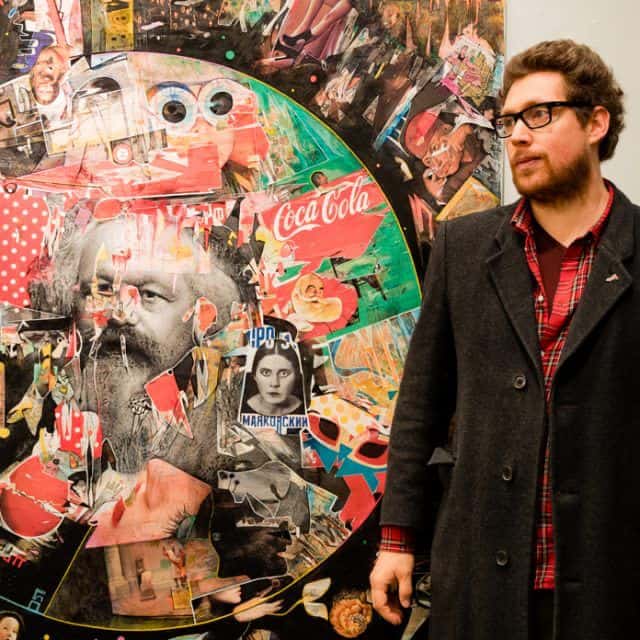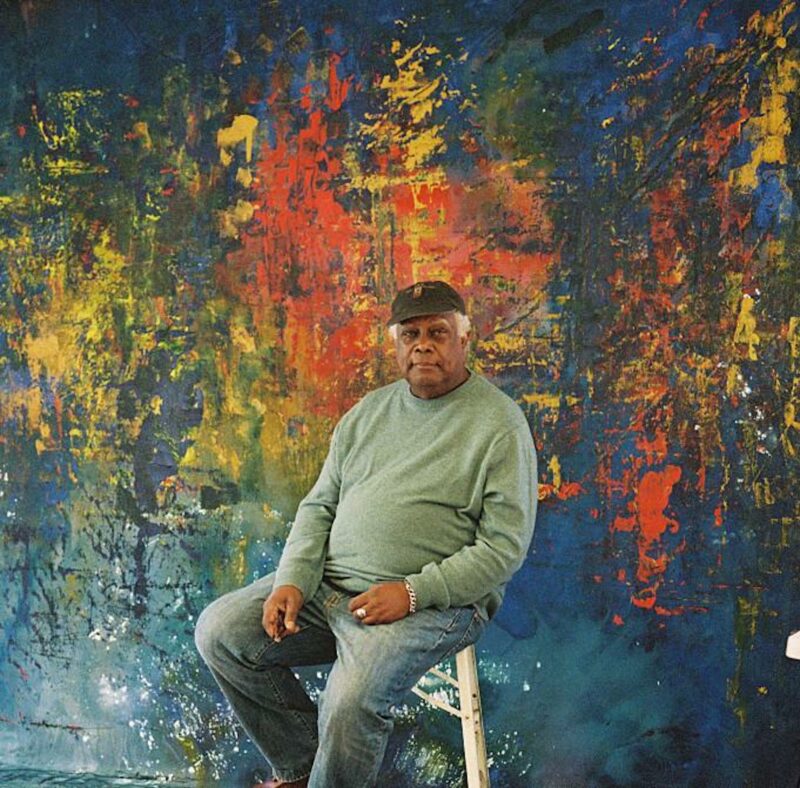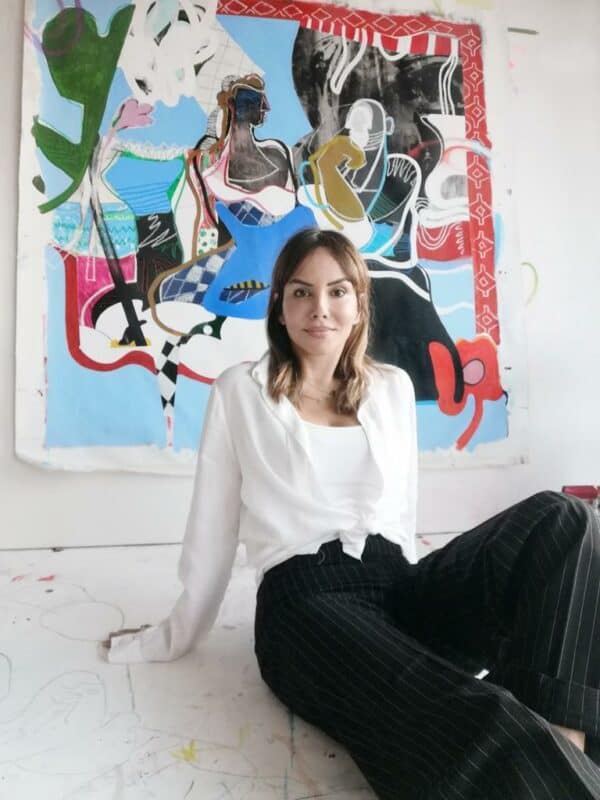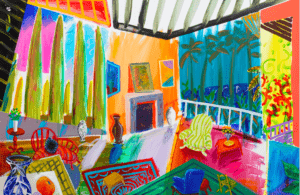Varvara Roza Galleries and The Blender Gallery are presenting a major solo exhibition of artist Konstantinos Patsios, titled ‘Deep in the forest we meet’. The exhibition runs from 23rd of June to 10th July at Gallery 8,8 Duke Street, St James London.
The oeuvre of Patsios is a synthesis of several painting metaphors, from conceptual art and expressionism to Pop Art, all delivered with a playful mockery and irony, and an invitation to critical discourse. ‘Deep in the forest we meet’ will feature paintings and collage as well as NFTs of the original artworks.
Through a selection of collaged artworks and painting on canvas, Konstantinos Patsios proves that he constantly evolves his expressive dexterity using a multitude of visual styles and references drawn from the history of art, comics, and the contemporary consumerist universe. With sharp narrative compositions that suggest modern palimpsests, he vigorously renders the contemporary deluge of the information of image.
His works come from three different periods: experimentation in black, where harsh contrasts are softened by the familiarity of his narrative compositions, often accompanied by political allusions; the shift towards colour and vivid contrasts where colour and collage balance, highlighting their multiple protagonists; and finally, the most deliberately talkative period of comics exploring their relationship – or rivalry – with painting.

Artist Konstantinos Patsios comments:
“My work is a synthesis of several painting metaphors, from conceptual art and expressionism to pop art, all delivered with a sense of mockery and irony, and an invitation to critical discourse. Although they may seem naïve at first sight, I think there is a strong underlying political dimension in my pictures. I use a variety of expressive media, from painting, sculpture and photography to large-scale installations. Art and especially image have their own rules: they go beyond paint, brushes and paper, to constitute a narrative. Psychoanalysis is not sufficient by itself to interpret an image. A piece of art provokes aphorisms and coincidences. It may not be in itself a cause for war, but it will always be a mirror. One of the principles in my work is the synthesis of non-matching materials, data and the completion of an unequivocal picture. Another personal obsession has to do with confusion: sometimes when the narrative is tiring to my viewer, I juxtapose a tangled mess in order to stop thinking and start seeing! I would like my work to form a new field of thinking where all contradictions are resolved and a new type of harmony governs both the visual and the logic!”

The final composition is a long and pre-planned process in Patsios’s work – despite the fact that the element of surprise is always present. Having initially selected and used materials (postcards, posters) that he himself has collected from his personal quests, experiences, and voyages, he then over-paints them, transmutes them and reconstructs them on canvas, thus transforming the painting into a practiced organism. In this way, memory functions both individually and collectively, since by reconstructing his own experiences, the artist creates a new narrative that from now on concerns the collective memory. In a manner similar to the mechanism of memory that – at times confused, and at others with clarity that almost reaches obsession – dredges up impressed images into the present. One discovers in Patsios’s images, fragments, impressions, colours and messages that are seemingly disparate, yet essentially perfectly homogeneous.
Katia Papandreopoulou, Art Historian, PhD says:
“One has often the impression that the aesthetics of the Post-modern are still active in the work of Konstantinos Patsios, since issues of identity – or multiple identities – appropriation, or opening of artistic quality to all forms of virtual representation, are constantly explored.
Through his works one can hear the agony of homogenization expressed by Guy Debord in the Society of the Spectacle, where the (shattered) images, sometimes as information or advertising, and sometimes as propaganda or a way of direct consumption of entertainment, henceforth belong to the sphere of representation, whose original unity has however gone forever.The element of challenge is constant, but not obvious, as sexuality is explored to the point where we will maintain an attitude of indifference towards the way in which the consumerist society has over-sexualized individuals over time. Nude models – both realistic from photo clippings and abstract (Moralis) – sometimes emerge in the narrative, causing the final result. Whereas, at other times they dominate and impose themselves upon the image. The way gender has been treated over time through art is of concern in Patsios’s work, as often there is nothing left but small evidence of what was once a gendered body. The portraits he uses indicate a desire to connect with the great tradition of painting, but their glory is gone.
Sometimes recognizable, at other times intentionally anonymous, they abandon their familiar qualities and coexist within a new, pop culture. Their colours are bold, while they often overlap with the personalities that comprise them. In the paintings of Patsios, the multiple subjects, gendered, animate or inanimate, do not cover each other and all claim their space. Paraphrasing Roland Barthes, the canvas becomes a multidimensional space where a variety of texts, none of which original, are mixed and yet at conflict with each other. In this way, not only are established idols and hierarchies challenged, but also the immediate need for new work is emphasized, whilst the intensity of the final result is often surprising.
The limits of art seem to mentally concern Patsios, however with his mixed techniques and the use of history and current affairs, he proves that art always precedes aphorisms. Through ‘Deep in the Forest we meet’, Patsios proposes humorous choices, provocation, and political allusions with balance but also intensity, making his works anchor in the present and speak a contemporary language.”

Konstantinos Patsios ‘Deep in the forest we Meet’ presented by Varvara Roza Galleries + The Blender Gallery 21st June – 10th July 2022, Gallery 8, 8 Duke Street, St. James’s, London SW1Y 6BN. varvararozagalleries.com









